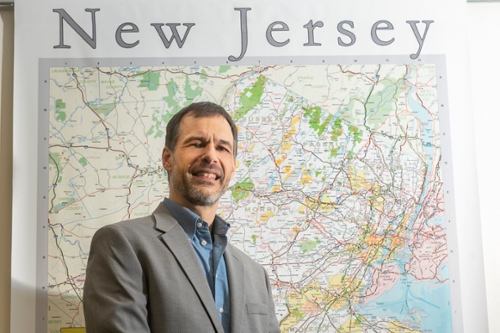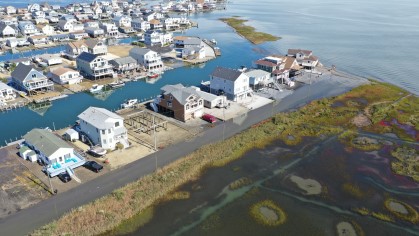Rowan/Rutgers report: Land Development slows in N.J. but coastal regions at risk
Rowan/Rutgers report: Land Development slows in N.J. but coastal regions at risk

Land development in New Jersey has slowed dramatically since the 2008 Great Recession, but it’s unclear how the COVID-19 pandemic and efforts to fight societal and housing inequality will affect future trends, according to a new Rowan University/Rutgers-New Brunswick co-authored report.
Between 2012 and 2015, some 10,392 Garden State acres became urban land, far fewer than the 16,852 acres per year in the late 1990s and continuing the trend of decreasing urban development that began in 2008.
While the rate of farm acreage converted to urban land decreased statewide in recent years, the conversion of upland and wetland forests in some areas increased, according to the report. Still, regulations put in place to limit development of the sensitive Pinelands and Highlands regions has largely worked, restricting growth to designated areas, according to Dr. John Hasse, a co-lead investigator of the study and a Rowan professor of Geography.
“Our study details how New Jersey’s regional planning initiatives in the Pinelands and Highlands has had a major impact on the way growth over the past three decades has occurred in these ecologically sensitive parts of the state,” said Hasse, who is also director of the Geospatial Research Lab in the Department of Geography, Planning & Sustainability. “Urbanization in these regional areas has been slower, consumed less land per capita and occurred largely in the designated growth zones compared with the rest of the state. The effect has been to reduce the pressure of development on natural lands, allowing more time for those lands to be conserved.”
The ecosystems of the Highlands and Pinelands regions play a critical role in removing carbon dioxide, a greenhouse gas linked to climate change, from the atmosphere and storing it in wood and forest soils.
But the news is not all good. New Jersey lost nearly 4,400 acres (almost seven square miles) of coastal salt

marshes from 1986 to 2015 due to rising sea levels and coastal erosion, losses that effect fish and wildlife habitats and the buffers against coastal storms.
“We have been tracking changes across the New Jersey landscape for nearly three decades and observed as the state transitioned from sprawling development through the 1980s and 1990s toward more concentrated urban redevelopment in the 2000s,” said co-author Dr. Richard G. Lathrop, Jr. at Rutgers.
Lathrop, director of the Center for Remote Sensing & Spatial Analysis and a professor of environmental monitoring in the Department of Ecology, Evolution, and Natural Resources in the School of Environmental and Biological Sciences at Rutgers, said while the study’s findings are promising, the effects of quarantine and economic collapse related to COVID-19 are less clear.
“Six months ago, I would have said that we could expect this pattern to continue over the coming decade. However, given the scope of recent and ongoing events, predicting how New Jersey’s land use and development patterns will change is much more uncertain,” Lathrop said.
The report analyzes change in the state’s land use/land cover between spring 2012 and spring 2015, based on N.J. Department of Environmental Protection data. The research is part of an ongoing series of collaborative Rutgers/Rowan studies examining New Jersey’s urban growth and land use change since 1986.
Among the report’s other findings:
- Sea-level rise continues: In some locations, the New Jersey shoreline retreated more than 1,000 feet in 29 years and, by 2050, about one-fifth of the state’s salt marshes are highly vulnerable to transitioning to tidal mud flat or facing greater “drowning” stress.
- Salt marsh retreat may be mitigated: Some of the expected loss of salt marshes due to erosion and drowning may be balanced by new marshes forming as upland/wetland forests.
- Pinelands land use is a bright spot: From 1986 to 2015, land use change and development in the Pinelands occurred at half the rate in the rest of New Jersey. Where it did occur, development generally took place in designated growth zones.